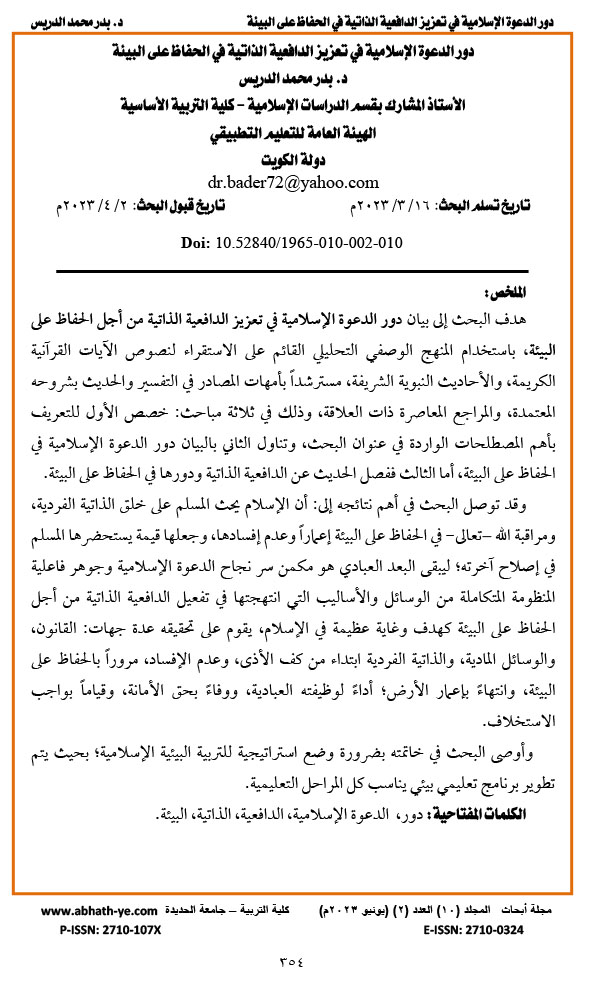دور الدعوة الإسلامية في تعزيز الدافعية الذاتية في الحفاظ على البيئة
Keywords:
Role, Islamic , Self-Motivation, EnvironmentAbstract
This paper investigates the role of Islamic "Da'wah" (calling people to embrace Islam) in enhancing the self-motivation for environmental conservation. It uses the descriptive analytical approach based on the induction of the texts of Qur'anic Verses and Prophetic Hadith, along with the guidance of great reference books of interpretation and Hadiths in their accredited explanations and relevant contemporary resources. The paper consists of three chapters: the first is devoted to introducing the most important terms of the research title, the second deals with displaying the role of Islamic "Da'wah" in environmental conservation, and the third details on self-motivation and its role in environmental conservation.
The study reached in its most important results that: Islamic urges a Muslim to create self-motivation, monitoring Allah the Almighty in preserving the environment by constructing it and not corrupting it, in addition to making this a value that a Muslim recalls to fix his afterlife, so as that the worship dimension remains the core of Islamic Da'wah's success and the essence of the effectiveness of the integrated system of methods and techniques pursued in activating self-motivation for preserving the environment as a great goal and purpose in Islam. This is carried out by several bodies: law, materialistic means and people's self-motivation through stopping harm and misuse, as well as environmental conservation and ending with Earth construction, thus performing the worshipping function, fulfilling trusteeship obligation and carrying out the duty of succession.
The study recommended in its conclusion the necessity of putting a strategy for an Islamic environmental education, through developing an environmental educational program that is appropriate for all educational stages.

Downloads
Published
How to Cite
Issue
Section
License
Copyright (c) 2023 ِabhath Journal for the Humanities

This work is licensed under a Creative Commons Attribution 4.0 International License.
- البحوث المنشورة في المجلة مرخصة بموجب ترخيص (CC BY 4.0) Creative Commons Attribution 4.0 الدولي.
- تسمح المجلة بإعادة نسخ وتوزيع ونقل العمل لأي وسط أو شكل لأي غرض.
- تسمح بالتعديل والتحويل، والإضافة على العمل مع نسبة ذلك إلى المؤلف.
- حقوق النشر يحتفظ بها الباحثون.




